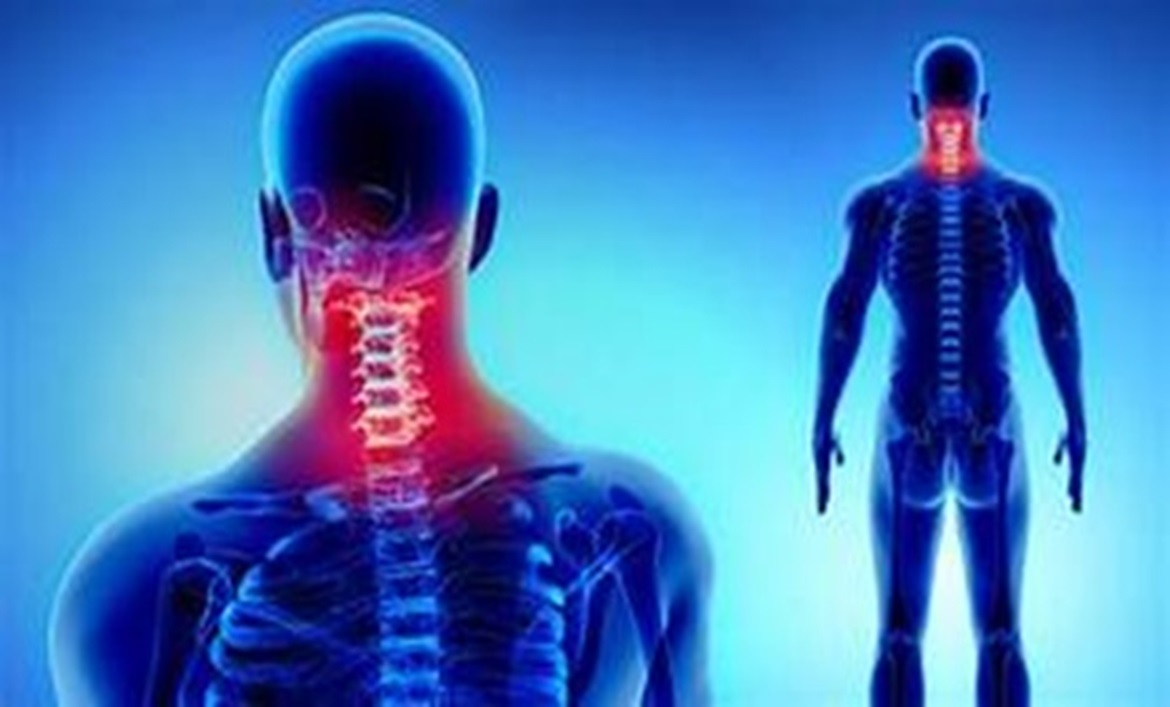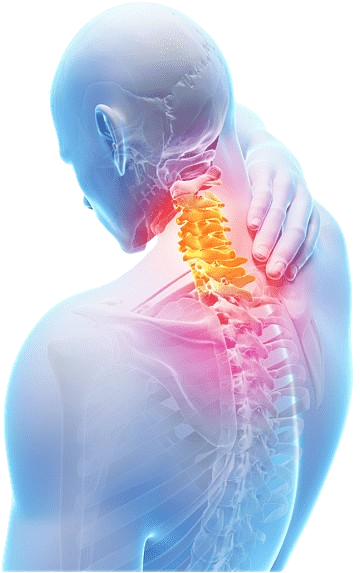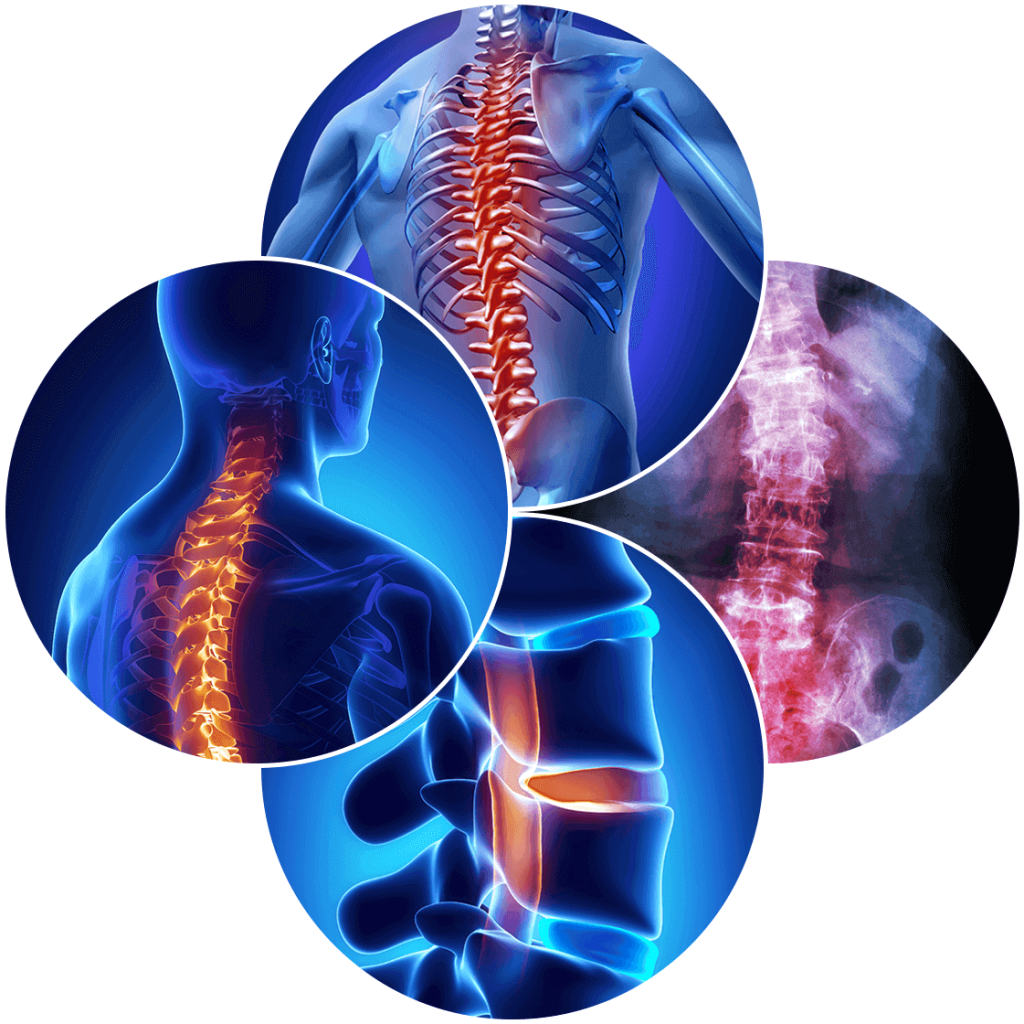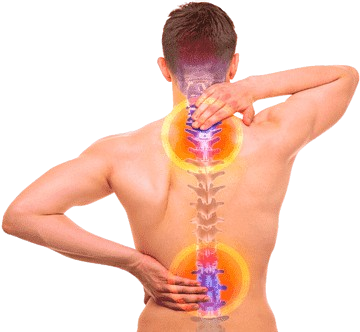
Cervical Pain
What is cervical pain ?
Cervical pain, also known as neck pain, refers to discomfort or pain in the neck region, which includes the cervical spine (the top seven vertebrae of the spine). It can range from mild to severe and may be acute (short-term) or chronic (long-term).
Common Causes of Cervical Pain:
1. Muscle strain or tension
2. Poor posture
3. Herniated or bulging discs
4. Degenerative disc disease
5. Osteoarthritis
6. Spinal stenosis (narrowing of the spinal canal)
7. Injury or trauma (e.g., whiplash)
8. Poor sleeping position
9. Overuse or repetitive strain
Symptoms of Cervical Pain:
- Localized Pain: Pain in the neck region.
- Radiating Pain: Pain that spreads to the shoulders, arms, or upper back.
- Stiffness: Reduced range of motion and stiffness in the neck.
- Headaches: Cervical pain can sometimes be associated with headaches.
- Numbness or Tingling: Pain or discomfort may extend to the arms or hands if nerves are affected.
Diagnosis and Treatment:
Cervical pain, commonly known as neck pain, can result from various factors such as poor posture, muscle strain, or injuries. Diagnosis typically involves a detailed medical history and physical examination, often supplemented by imaging tests like X-rays or MRIs to identify any underlying issues, such as herniated discs or arthritis.
Treatment usually begins with conservative methods. Resting the neck and taking over-the-counter pain relievers like ibuprofen or acetaminophen can help alleviate discomfort. Physical therapy is often recommended to strengthen neck muscles and improve flexibility.
Applying heat or ice can provide additional relief. For persistent pain, healthcare providers may consider corticosteroid injections to reduce inflammation. In rare cases, surgical intervention may be necessary to address structural problems. It’s crucial to consult a healthcare professional for a personalized treatment plan, as early intervention can significantly improve recovery outcomes and enhance quality of life.
outcomes.
Treatment options can include
- Cervical pain treatment options vary depending on the severity and underlying cause of the condition. Initial approaches typically focus on conservative methods:
- Rest: Avoiding activities that exacerbate pain is crucial for recovery.
Pain Medications: Over-the-counter options like ibuprofen or acetaminophen can help reduce pain and inflammation. In some cases, prescription medications may be necessary.
Physical Therapy: A physical therapist can develop a personalized exercise program to strengthen neck muscles, improve flexibility, and promote better posture.
Heat and Ice Therapy: Applying heat can help relax tense muscles, while ice packs can reduce inflammation and numb sharp pain.
Chiropractic Care: Spinal manipulation performed by a chiropractor may provide relief by improving spinal alignment and reducing nerve irritation.
Corticosteroid Injections: For persistent pain, injections can reduce inflammation and provide temporary relief.
Surgery: In cases where conservative treatments fail, surgical options may be explored to address structural issues, such as herniated discs or spinal stenosis.
- Always consult a healthcare professional to determine the most appropriate treatment plan based on individual needs and symptoms, as early intervention can lead to better outcomes.
Easy Treatments for Cervical Pain
Easy Treatments for Cervical Pain
Cervical pain, commonly referred to as neck pain, is a prevalent issue that can stem from various factors such as poor posture, muscle strain, injuries, or even stress. Fortunately, there are many effective and easy treatments available to alleviate this discomfort. In this guide, we will explore a range of approaches that you can incorporate into your daily routine to manage and relieve cervical pain.
Understanding Cervical Pain
Before diving into treatments, it’s important to understand the causes of cervical pain. Common triggers include:
- Muscle Strain: Often due to overuse, poor posture, or sleeping in an awkward position.
- Injuries: Whiplash or other trauma can lead to significant neck pain.
- Degenerative Disc Disease: Age-related changes can affect the cervical spine.
- Herniated Discs: Discs that bulge or rupture can press on nerves.
- Stress: Emotional stress can lead to muscle tension in the neck and shoulders.
Recognizing the cause of your cervical pain can help you choose the most appropriate treatment.
1. Rest and Posture Improvement
One of the simplest ways to alleviate neck pain is by giving your body a chance to rest. If you notice pain after a long day at work or after physical activity, take a break and allow your neck muscles to recover.
Posture Tips:
- Workstation Setup: Ensure your computer monitor is at eye level and your chair provides good lumbar support. Keep your feet flat on the floor.
- Phone Use: Use a headset or speakerphone to avoid cradling the phone between your ear and shoulder.
- Sleeping Position: Choose a supportive pillow that keeps your neck aligned with your spine.
2. Heat and Cold Therapy
Applying heat or cold to the affected area can provide significant relief.
Cold Therapy:
- Use an ice pack wrapped in a cloth for 15-20 minutes to reduce inflammation and numb sharp pain.
- Cold therapy is particularly effective within the first 48 hours of an injury.
Heat Therapy:
- After the initial inflammation subsides, apply a warm compress or heating pad to help relax and soothe stiff muscles.
- You can also take a warm shower or bath for overall muscle relaxation.
3. Gentle Stretching and Exercises
Incorporating gentle stretches and exercises into your routine can help improve flexibility and strength in the neck area.
Neck Stretches:
- Neck Tilt: Sit or stand straight, gently tilt your head toward one shoulder until you feel a stretch. Hold for 15-30 seconds, then switch sides.
- Chin Tucks: Sit or stand with a straight spine. Pull your chin straight back towards your neck, keeping your head level. Hold for 5 seconds, then release. Repeat 10 times.
- Shoulder Rolls: Roll your shoulders forward in a circular motion for 10 repetitions, then backward for another 10.
4. Over-the-Counter Pain Relief
For immediate relief, over-the-counter pain medications can be effective.
- NSAIDs: Non-steroidal anti-inflammatory drugs, such as ibuprofen or naproxen, can reduce pain and inflammation. Always follow the recommended dosage and consult with a healthcare professional if you have concerns.
5. Physical Therapy
If your cervical pain is persistent, consider seeking help from a physical therapist. They can create a tailored exercise program designed to strengthen neck muscles and improve posture. Physical therapists can also teach you proper body mechanics to prevent future injuries.
6. Chiropractic Care
Chiropractic adjustments can be beneficial for cervical pain relief. Chiropractors manipulate the spine and neck to restore alignment, potentially alleviating pain and improving mobility. Make sure to choose a licensed and experienced chiropractor.
7. Acupuncture
Acupuncture, an ancient Chinese practice, involves inserting thin needles into specific points on the body to relieve pain. Many people report significant improvements in neck pain after a few sessions. It’s a drug-free option that might work well for you.
8. Massage Therapy
A gentle massage can help relieve tension in the neck and shoulders. You can either seek professional help or use self-massage techniques:
- Self-Massage: Use your fingers to gently knead the muscles at the base of your skull and along the sides of your neck. You can also use a tennis ball against a wall for a more targeted massage.
9. Ergonomic Adjustments
Improving your ergonomics at work and home can significantly impact neck pain.
- Chair Height: Your chair should allow your feet to rest flat on the floor. Your knees should be at hip level or slightly lower.
- Monitor Position: The top of your monitor should be at eye level, so you’re not tilting your head up or down.
10. Hydration and Nutrition
Staying hydrated is essential for muscle health. Dehydration can lead to muscle cramps and stiffness. Additionally, a balanced diet rich in anti-inflammatory foods—like fruits, vegetables, and omega-3 fatty acids—can support overall well-being and may reduce neck pain.
11. Mindfulness and Relaxation Techniques
Stress can exacerbate muscle tension, leading to increased cervical pain. Incorporating mindfulness practices can help manage stress:
- Yoga: Gentle yoga can improve flexibility, strength, and relaxation. Focus on poses that stretch the neck and shoulder areas.
- Meditation: Practicing mindfulness meditation can help calm your mind and reduce stress, which may help ease muscle tension.
12. Cervical Collar
In some cases, a soft cervical collar can provide support and limit movement, allowing for healing. However, it’s best to use this under the guidance of a healthcare professional, as prolonged use can weaken neck muscles.
13. Sleep Hygiene
Ensure you have a comfortable sleeping environment. A supportive mattress and pillow that keep your spine aligned can significantly affect neck pain. Consider sleeping on your back or side rather than your stomach to reduce strain.



Effective Solutions for Relief
Here are some effective solutions for relieving cervical pain:
1. Physical Therapy
- A physical therapist can develop a personalized exercise program to strengthen neck muscles and improve flexibility.
2. Chiropractic Care
- Chiropractic adjustments can help realign the spine and relieve tension in the neck.
3. Acupuncture
- This traditional Chinese medicine technique may help alleviate pain by stimulating specific points in the body.
4. Ergonomic Improvements
- Ensure your workspace is ergonomic: adjust chair height, use a headset for phone calls, and position your computer screen at eye level.
5. Hot and Cold Therapy
- Alternating heat and cold packs can reduce inflammation and relieve muscle tension. Use heat for 15-20 minutes followed by cold for the same duration.
6. Cervical Collar
- A soft cervical collar can provide support and limit neck movement, allowing for rest and recovery.
7. Pain Relief Medications
- Over-the-counter options like NSAIDs (ibuprofen or naproxen) can help manage pain and inflammation.
8. Gentle Stretching and Exercises
- Incorporate stretches targeting the neck and shoulders. Simple neck rotations and shoulder shrugs can be effective.
9. Mindfulness and Relaxation Techniques
- Practices like yoga, meditation, or tai chi can reduce stress and promote relaxation, which may help alleviate pain.
10. Hydration and Nutrition
- Staying hydrated and eating anti-inflammatory foods (like fruits, vegetables, and omega-3 fatty acids) can support muscle health.
If your cervical pain persists or worsens, it’s important to consult a healthcare professional for a comprehensive assessment and tailored treatment plan.
Have a Question?
FAQ
We are here to help you 7 days a week and respond within 24 hours. Plus, you can find most answers to your questions right on this page and also you can communicate with us using phone call.
Early signs include joint pain, stiffness, swelling, and reduced mobility. These symptoms may come and go, but persistent discomfort should prompt a visit to a healthcare provider.
There is currently no cure for arthritis, but the condition can be managed effectively with the right treatment plan, including medications, lifestyle changes, and sometimes surgery.
It’s best to limit foods that can trigger inflammation, such as processed foods, sugary beverages, and red meats. Opt for anti-inflammatory foods like leafy greens, berries, and fish rich in omega-3.
Yes, regular exercise is beneficial for managing arthritis. Low-impact activities like swimming, walking, and stretching help maintain joint flexibility and muscle strength without putting excessive stress on the joints.
